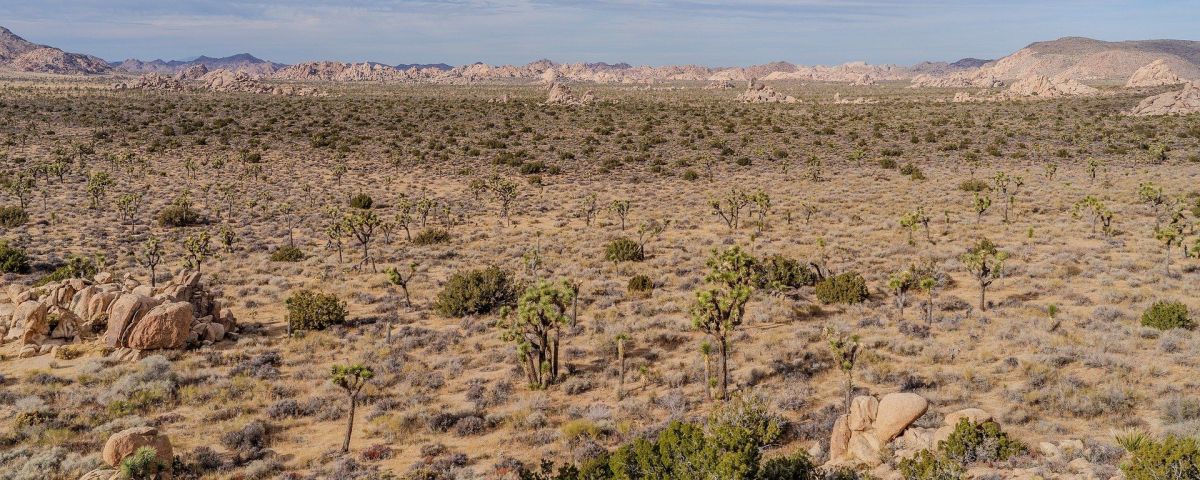Angus Retallack explains how, using remote sensing data over a 22-year observation period, vegetation recovery after the removal of livestock and the introduction of conservation-focused management can be assessed.
Arid and semi-arid rangelands cover close to 50% of the Earth’s land surface and are relied upon by a diverse range of stakeholders including Indigenous people, pastoralists and environmental conservationists. Sustainable use and conservation of these regions requires effective monitoring to understand the impacts of management, and to adapt practices into the future.
Achieving this monitoring is where difficulties arise. Extreme fluctuations in vegetation driven by highly variable climatic conditions, and the vast scales of these regions, makes measuring change in condition difficult.
Challenges in monitoring rangeland condition
Traditional on-ground monitoring techniques at small sample sites are insufficient for inferring conditions across extensive rangeland regions. But remote sensing methods provide an ideal solution: frequent images from satellite platforms allow measurements at broad scales while capturing the inherent variability in space and time of such ecosystems.
However, an effective method for separating management-driven change from climate variations and trends is required, with past approaches dependent on reference areas that are in good condition as well as reliable climate data, both of which are unavailable for much of the world’s rangelands. Our study presents a new method that uses satellite image time series to assess the effects of differing land management and is simple to understand and implement.
Conservation and sheep grazing management compared: Bon Bon Station Reserve
Bon Bon Station Reserve is a formerly operational sheep station in the southern Australian rangelands that has been destocked and managed for conservation by Bush Heritage Australia over the past 15 years. We use this ~2160 km2 property to test our method for assessing relative change in land condition over time.
We used fractional ground cover data from satellites, which shows the relative proportions of bare ground, living photosynthetic vegetation and woody or non-living non-photosynthetic vegetation. This fractional cover data was acquired in monthly time steps over 22 years, with a spatial resolution of 250 metres.

We compared Bon Bon to immediately surrounding pastoral stations that have been consistently stocked with sheep over the study period (2001 – 2022). This design means we can assume that variations in climate are experienced across all properties, and that any relative changes in fractional cover between stocked (surrounding) and destocked (Bon Bon) areas must be the result of management differences, and not due to changes in climatic conditions.
The figure below shows changes in each of the three fractional cover components from the first 5 years to the last 5 years of the study period, with clear increases in persistent non-photosynthetic cover, and decreases in persistent bare cover concentrated within Bon Bon, and coinciding clearly with the western boundary.

Over the 22 year study period, persistent non-photosynthetic cover increased by 1.1% at Bon Bon relative to surrounding properties, persistent photosynthetic cover increased by 0.5% and persistent bare ground decreased by 2.1%. These changes became noticeable around the time of stock removal from Bon Bon in 2008.
Implications for rangeland managers
Previously, measuring changes in vegetation in highly variable rangeland ecosystems has been a difficult task, requiring complex statistical methods and large amounts of often unattainable or poor quality climatic data. Focusing on accessibility and ease of implementation, this method provides an opportunity for land managers of vast rangeland areas to assess relative changes in vegetation cover.
By understanding how vegetation changes relative to surrounding areas, it is possible to understand how changes in management practice may have influenced vegetation condition, allowing management strategies to be adapted and improved for better outcomes into the future.
Read the full article “Remote sensing for rangeland conservation monitoring: Impacts of livestock removal after 15 years” in Journal of Applied Ecology.


